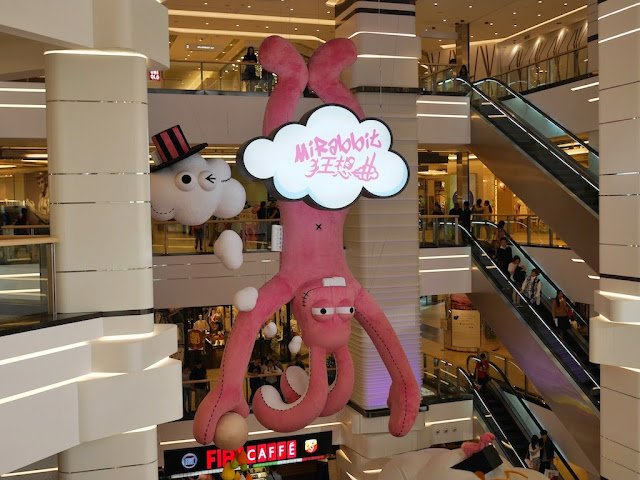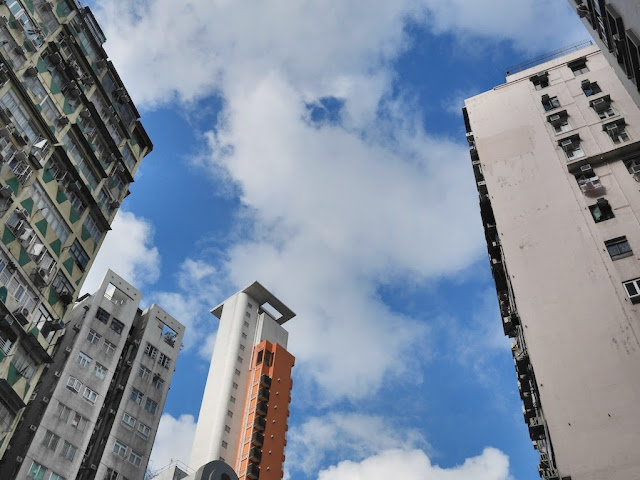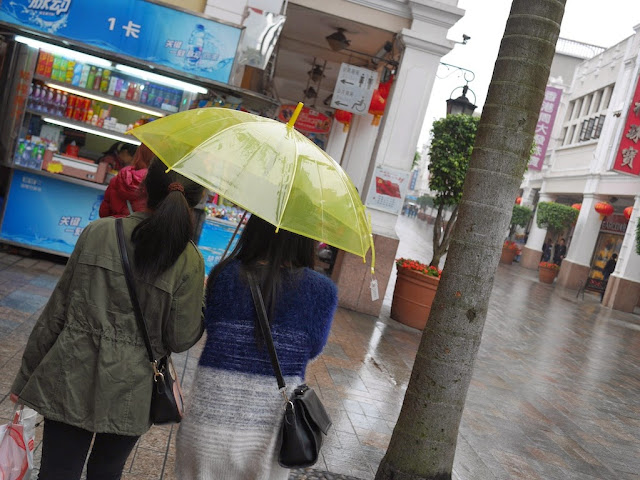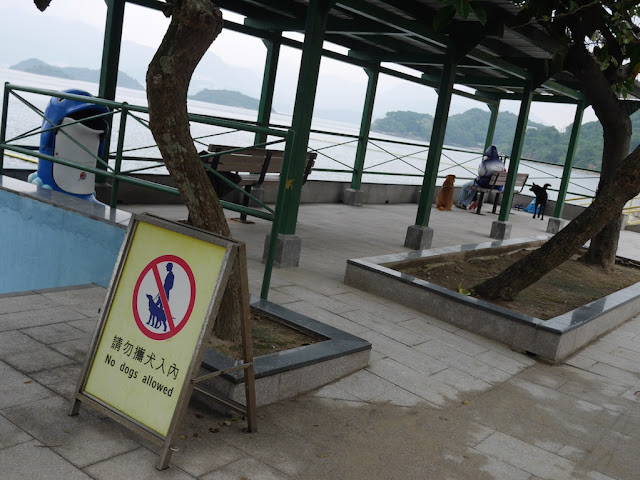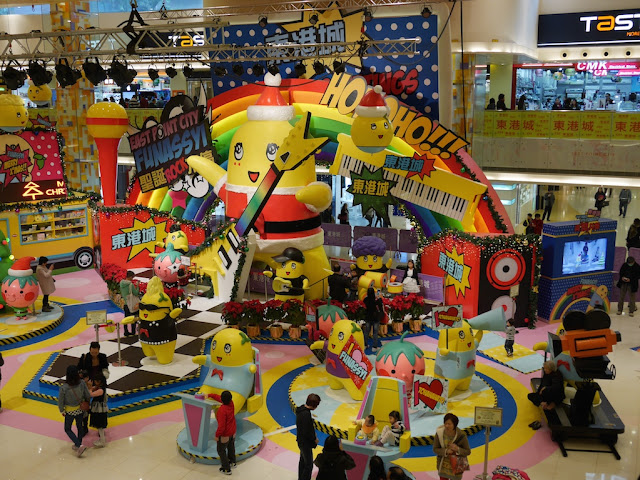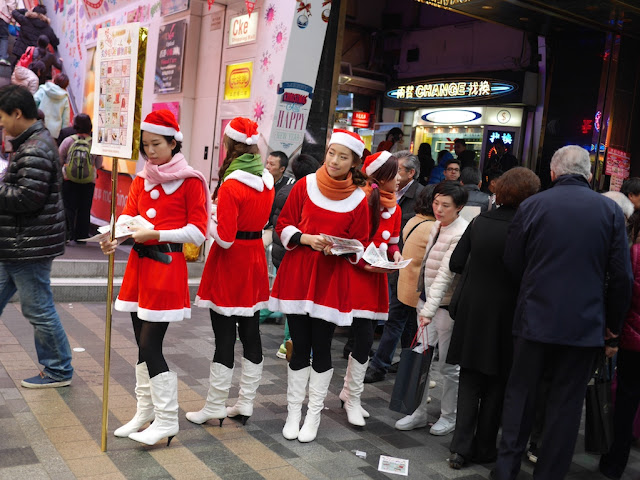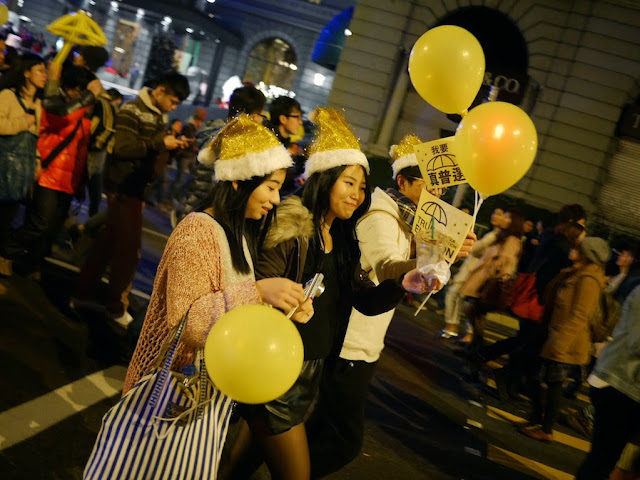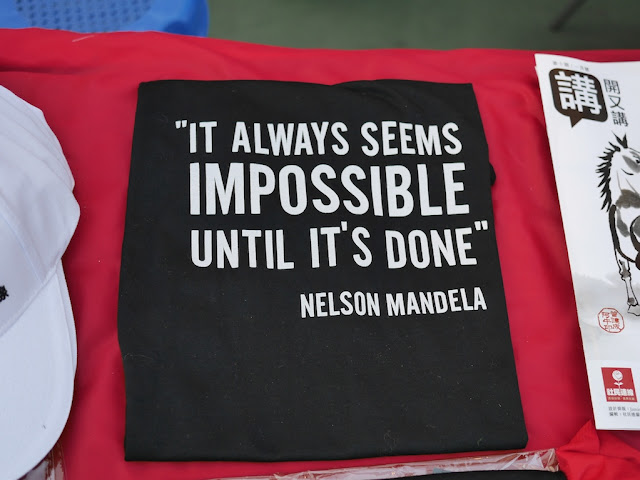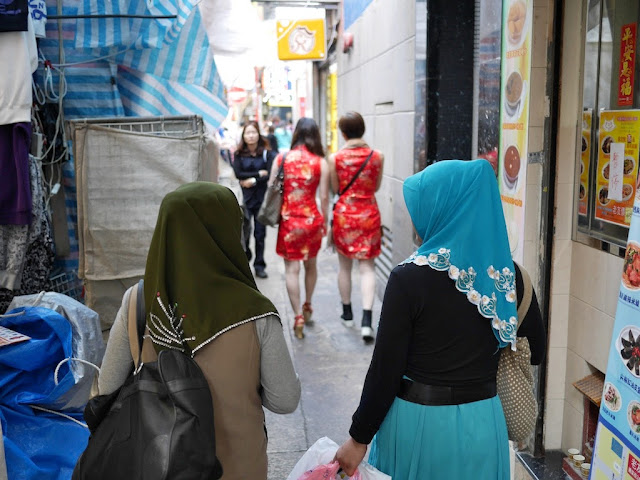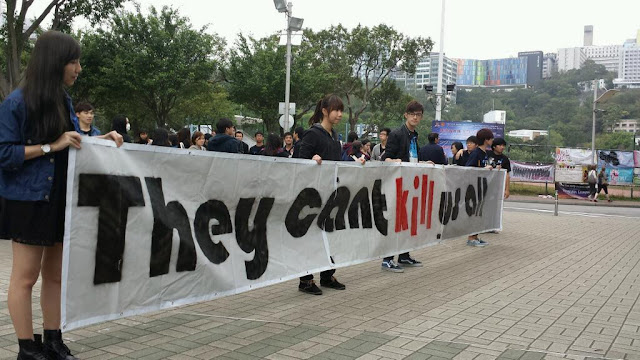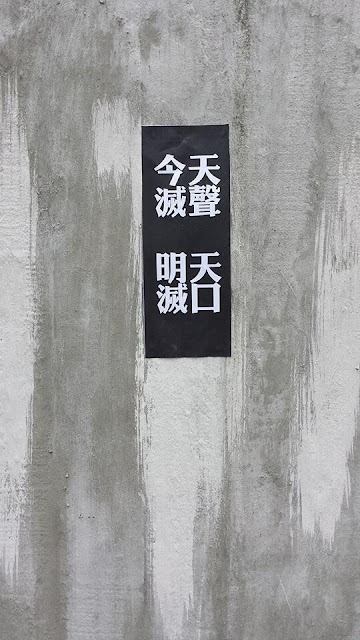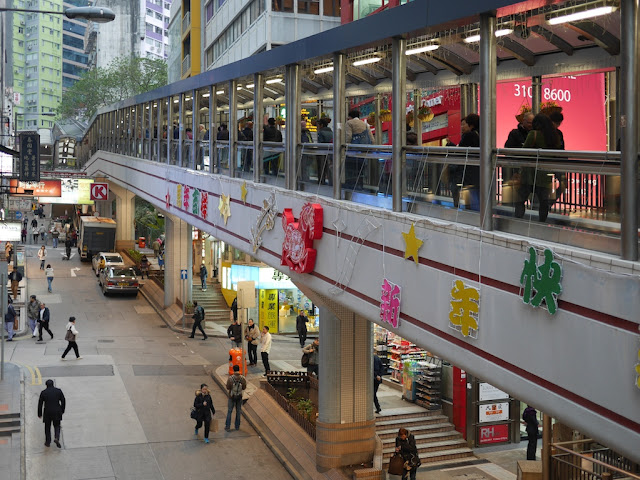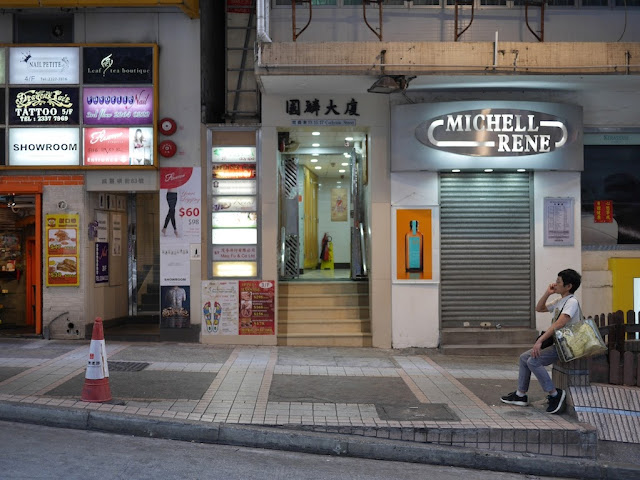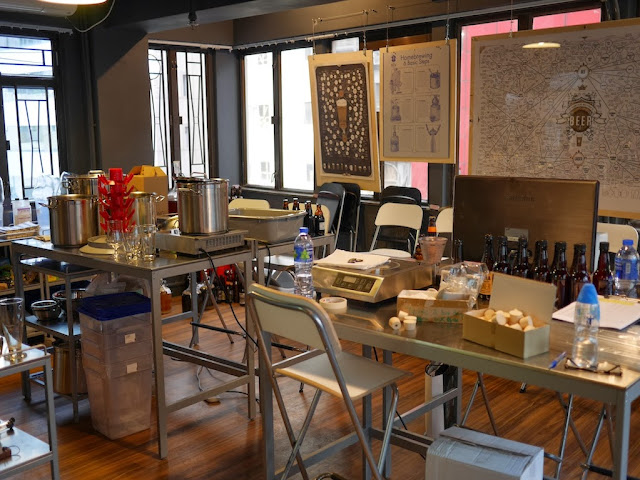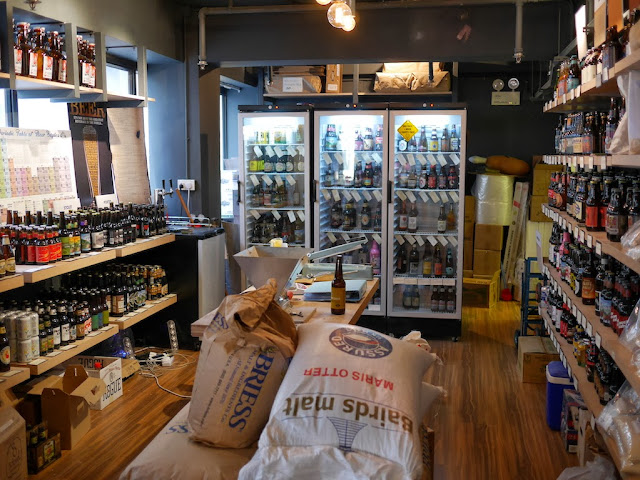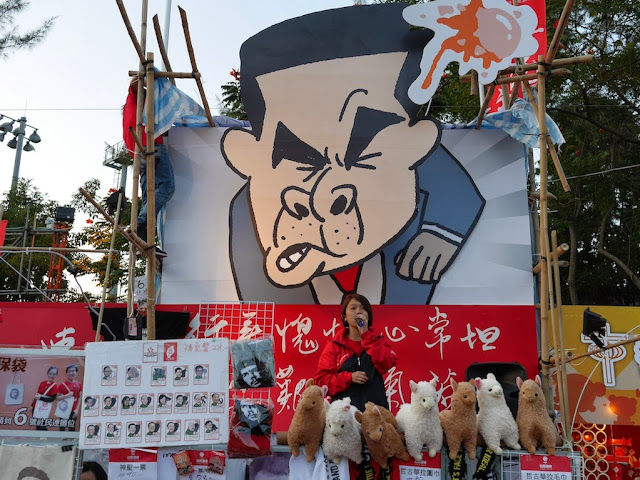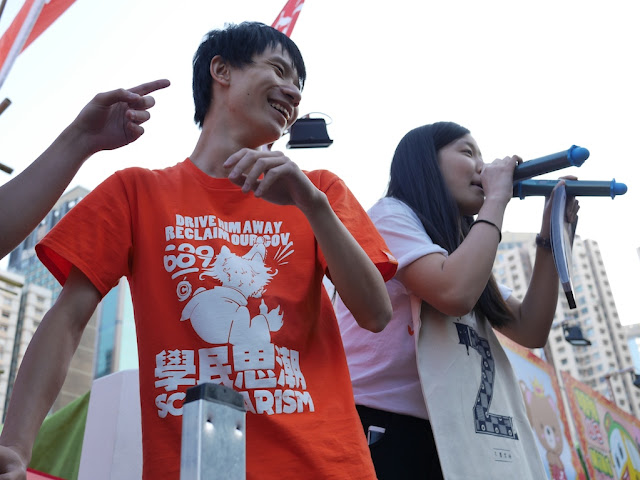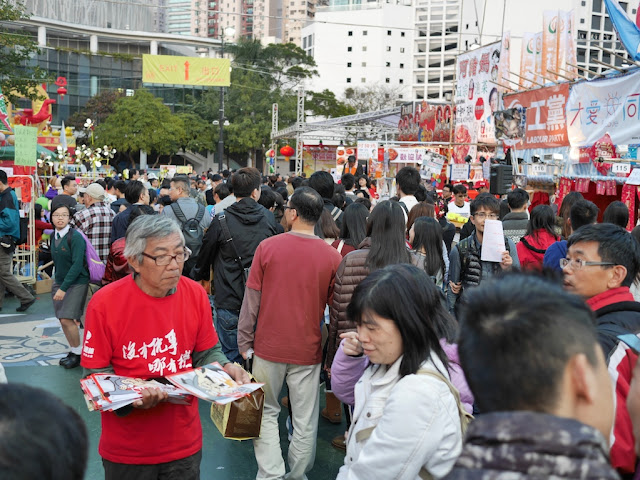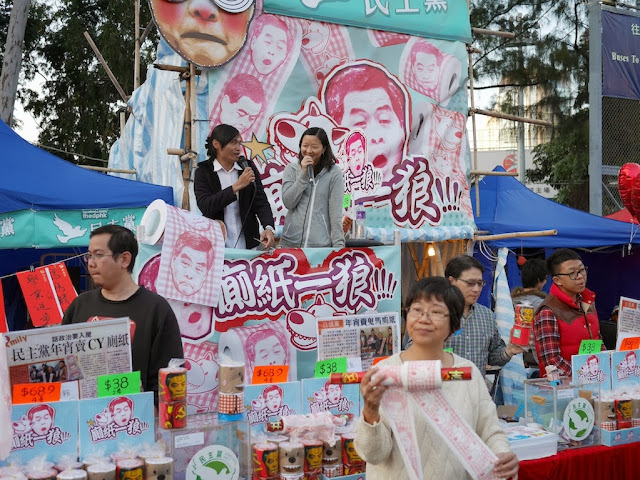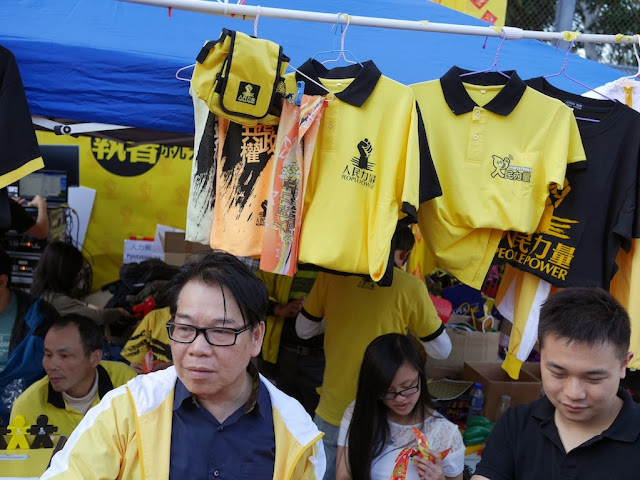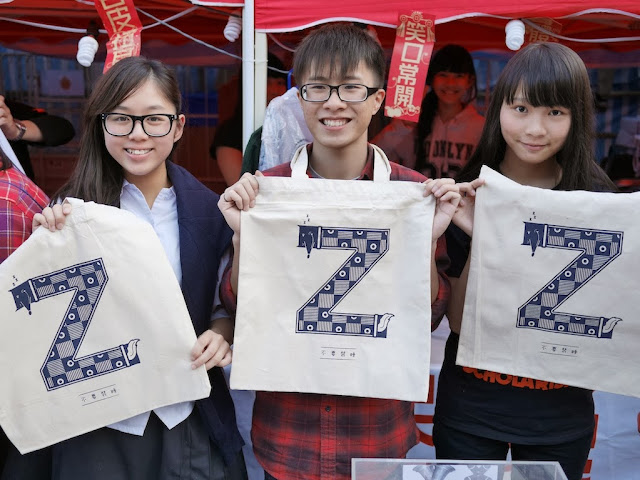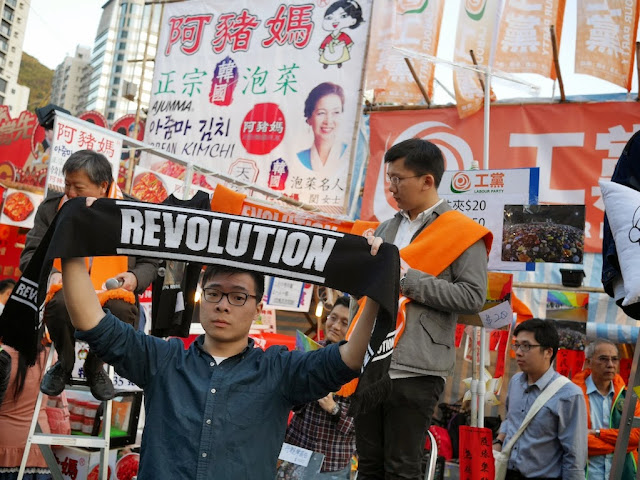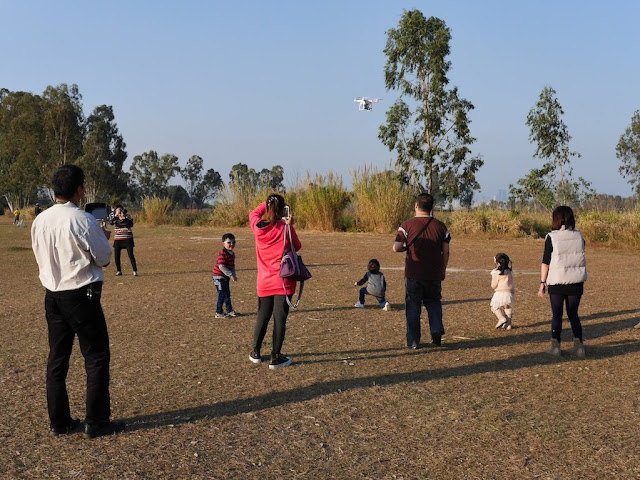My experience at a public restroom under the Canal Road Flyover on Hong Kong Island highlighted some of the differences between the typical public restrooms I've encountered in Hong Kong and those I've encountered in mainland China. It also says something about how my perceptions can change. I'm reasonably sure that when I first came to China my focus would have been on other attributes of the restroom. So, for the first time ever here, a public restroom review:
 |
| Exhibit A: The outside of the public restroom |
I didn't think much of the public restroom's appearance from the outside, though its location under an elevated road gave it a special ambience.
The surprises came inside.
 |
| Exhibit B: Inside a bathroom stall |
My friends who have never left a country such as the US may have thought "Whoah, a squat toilet!"
I thought "Whoah, TWO rolls of toilet paper!"
In mainland China, most public restrooms I've seen* do not contain toilet paper. Exceptions are most common in upscale malls (and I'm being generous including these in the category "public restroom"). Typically, though, you need to bring your own toilet paper (small packs of tissues are standard) or buy some from somewhere nearby (sometimes at the public restroom itself).
In Hong Kong, toilet paper in public restrooms is a more common sight, but I noticed it is not a given in public restrooms at parks or sports grounds.
But two rolls of toilet paper in a squat toilet stall in a public rest room? This was a first for me in China.
After departing the stall, I had my second surprise.
 |
| Exhibit C: A sink |
My friends who have never left a country such as the US may have thought "Whoah, the sink looks really grimy!"
I thought "Whoah, hand soap!"
In a country so concerned about contagious diseases such as the bird flu, it still amazes me that public bathrooms in mainland China typically do not have soap. Sometimes, public restrooms there will have an empty soap dispenser that shows signs of having been previously filled, perhaps when it was first installed. It's hard to know how long any soap may have lasted, since even when there is soap, I see very few people ever use it.
Summary: This public restroom is not going to win any glamour awards, but at the time I wasn't looking for anything glorious--just the basics. For a public restroom under a bridge in China, I give it a hearty salute for its toilet paper and soap. The automated water faucet is also nice, though those are rather common in China. The bathroom was one of the grimier I've experienced in Hong Kong, but that's exactly what made the toilet paper and hand soap all the more remarkable to me. And when it comes to a public restroom, I'll choose hand soap over a sparkling sink any day.
I'm sure readers familiar with China's public restrooms appreciate there is much more to say about them and there are nuances to some of my claims. Feel free to share your thoughts. There will be more on this topic later.
*Yes, for obvious reasons, the distribution of samples in my "research" leans heavily towards men's bathrooms.



